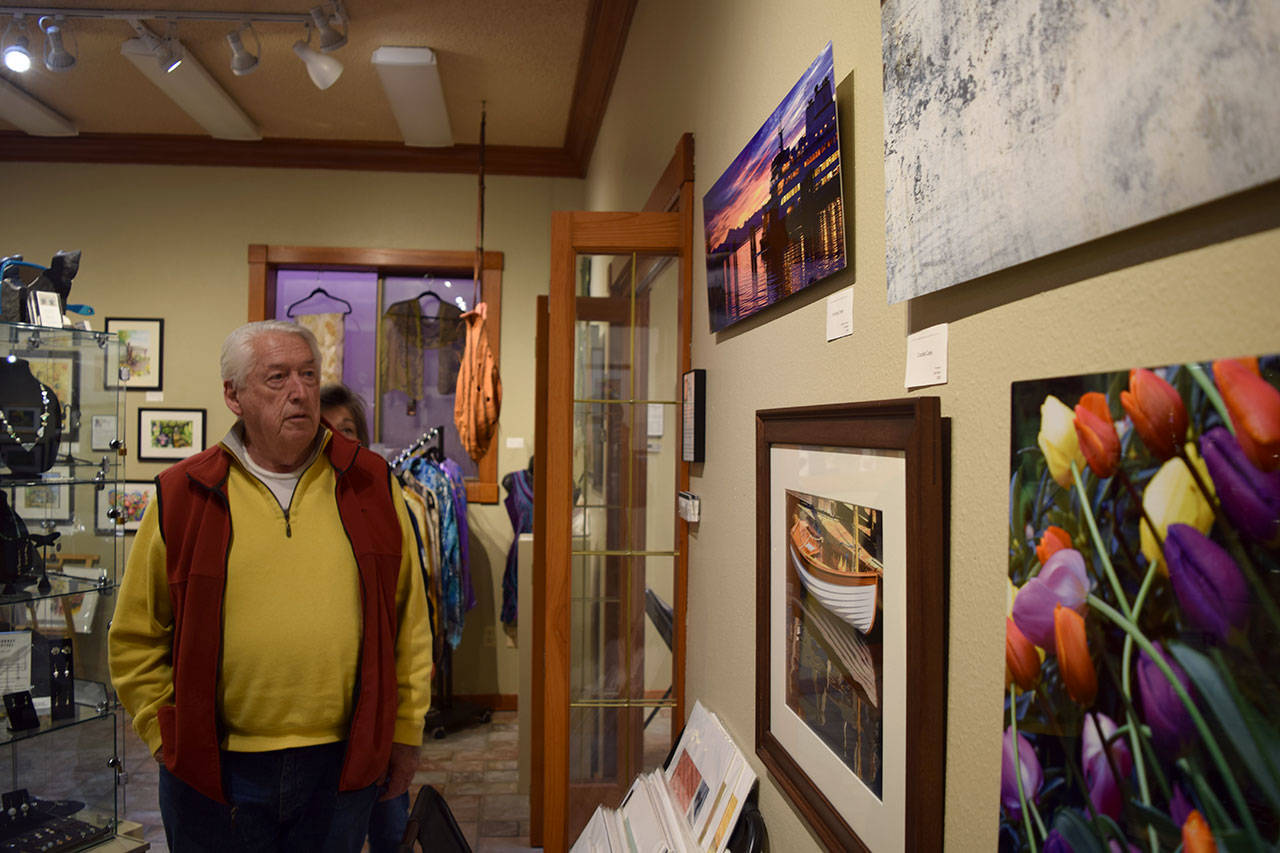In 1992, a group of artists took advantage of a busy street fair on Memorial Day weekend and sold their work from the sidewalk in front of The Braeburn in downtown Langley.
It was the beginning of a creative co-op that would later become the artist-owned Whidbey Art Gallery. Their successes convinced them to move into the storefront that now houses The Braeburn. The rest, as they say, is history.
“I’m delighted it’s survived 25 years; at the start I didn’t think it ever would,” original member and bookkeeper Janie Pulsifer said. “As far as I’m aware, it’s the oldest gallery in Langley, and to see the cooperative thrive like it is today is a treat.”
The Whidbey Art Gallery, now located on Second Street and Frick Lane, is celebrating its 25th anniversary in a similar fashion to how it all began: on the street. The gallery will close Frick Lane on Saturday, May 27 and turn it into an outdoor art demonstration. Pieces from resident artists will be sold at discount prices, beverages and food will be on hand and live demonstrations of anything from painting to photo processing will take place. Live music is also in store for the entire afternoon.
According to photographer and working member Tom Hanify, it’ll be a day of “artists in action,” with affordable tokens to take home.
“These items will normally sell for three times their price,” Hanify said. “We’re hoping to attract people that couldn’t typically afford a piece for over $100. We try to be more accessible.”
Accessibility to burgeoning artists is one of the gallery’s goals. The step up to showcasing work in a gallery is a tough progression for many, and the gallery encourages first-timers to submit their work for consideration.
That formula of welcoming new members and guest artists has worked.
“We have 2,150 square feet of retail space divided into five separate rooms, two of which we’ve added in the last five years,” painter Pat Brooks said. “We’re doing so well because we have dedicated volunteers that make the gallery tick and we manage ourselves well.”
Guest artists are featured every month in the front room. Additionally, the showroom continues to welcome new members whenever there is space — Hanify estimates there have been roughly 180 members over the years. In fact, the gallery was a stepping stone for his own photography.
“I’d never been in an art gallery before,” Hanify said. “For a lot of us, it’s been a wonderful learning opportunity, and our art is better as a result of being here. When you’re surrounded by other artists who use different mediums and express themselves in different ways, it naturally rubs off.”
The gallery’s success over the years is a nod to the volunteers that operate it, Hanify and Brooks said. There aren’t any paid employees who work at the gallery. Instead, it’s staffed by volunteers. Executive decisions are made by committees that handle everything from marketing and finances to display. Decisions regarding featured artists and who to welcome as new members are made collectively.
Volunteers are made up of both working artists and consignment artists. Those who staff the gallery are given a larger portion of the profits they make on sales, whereas consignment artists who don’t work pay a higher commission of 30 percent. Overall, the gallery takes a relatively small portion of sales in comparison to other galleries that Hanify says typically take more than 50 percent.
At Whidbey Art Gallery, he says up-and-coming artists get more out of their displays.
“Our pricing is not out of line for customers, and artists keep more of their profits in return for the work that they do,” Hanify said. “It’s also a win-win when it comes to guest artists in that our work is exposed to their friends and their work is exposed to our guests. It’s a great way for an artist to get value for their work.”
Other than success, what has kept the collaborative effort together over the years, and even through the recession, is artist-to-artist camaraderie. When the cooperative couldn’t afford rent for a retail space, the artists stuck together and remained an entity despite not having a showroom.
“After all these years, we still just get along,” Hanify said. “We have fun together, we bounce ideas off each other and continue to inspire each other. We’ve all become better artists as a result.”


